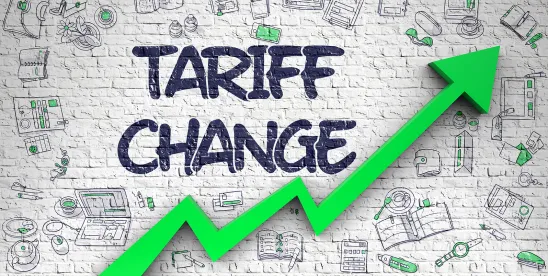On 10 February 2025, President Trump announced that he was increasing tariffs on US imports of aluminum from 10% to 25% and ending various exemptions and exclusions to the US tariffs of 25% on imports of steel. The tariffs were first imposed in President Trump’s first term under the authority of Section 232 of the Trade Expansion Act of 1962, which permits the President to impose import restrictions (tariffs and/or quotas) based on an investigation and affirmative determination by the US Commerce Department that certain imports threaten to impair US national security. Section 232 tariffs on aluminum and steel were originally imposed by President Trump in 2018 and continued under President Biden.
This latest tariff action revokes agreements with Argentina, Australia, Brazil, Canada, the European Union, Japan, Mexico, South Korea, Ukraine, and the UK that had suspended tariffs on certain aluminum and steel products imported from those countries. It also terminates the company and product-specific exclusions that had been granted by the US Commerce Department since 2018. Accordingly, unless further changes are implemented, effective 12 March 12 2025 at 12:01 am Eastern Time all steel and aluminum products identified in the President’s proclamations will be subject to 25% tariffs. Further, such tariffs will be extended to certain “derivative” steel and aluminum products (i.e., products made by further manufacturing basic steel and aluminum shapes) not previously covered by Section 232 tariffs.
President Trump’s decision to reset and increase tariffs is based on finding that the original Section 232 tariffs were not being effective in addressing findings that the global steel industry suffered from massive overcapacity. According to the original investigation and the latest findings, this global overcapacity is primarily due to China’s policies to promote its aluminum and steel industries and the spillover effects this build-out was continuing to have on third country markets, which, in turn, were channeling their own excess aluminum and steel to the US market.
Notably, in his press conference announcing the tariffs, President Trump indicated that countries may have room to negotiate potential settlements or modifications of the tariffs – especially if they are able to achieve relatively balanced trade with the United States or otherwise demonstrate economic benefits to the United States from trade and investment. When asked about the return of tariffs to imports of steel and aluminum from Australia, the President noted that the US has enjoyed a moderate trade surplus with Australia primarily due to that country’s purchases of aircraft from the United States and that he was in discussions with Australia’s prime minister about the tariffs and other issues.
The President also signaled that the tariffs may be extended to additional downstream products made from aluminum or steel. Specifically, the President’s action calls on the US Commerce Department to establish a process for interested parties to request that additional derivative aluminum or steel products be subject to Section 232 tariffs. This process must be in place by 12 May 2025.
The impending reset of aluminum and steel tariffs underscores the importance for companies and investors in sectors that produce or utilize these products to assess the impact on their own supply chains, pricing, business plans, and contractual and customer relationships. Companies and investors should also consider options under US law and contractual agreements to mitigate the potential impacts of the tariffs.




 />i
/>i

